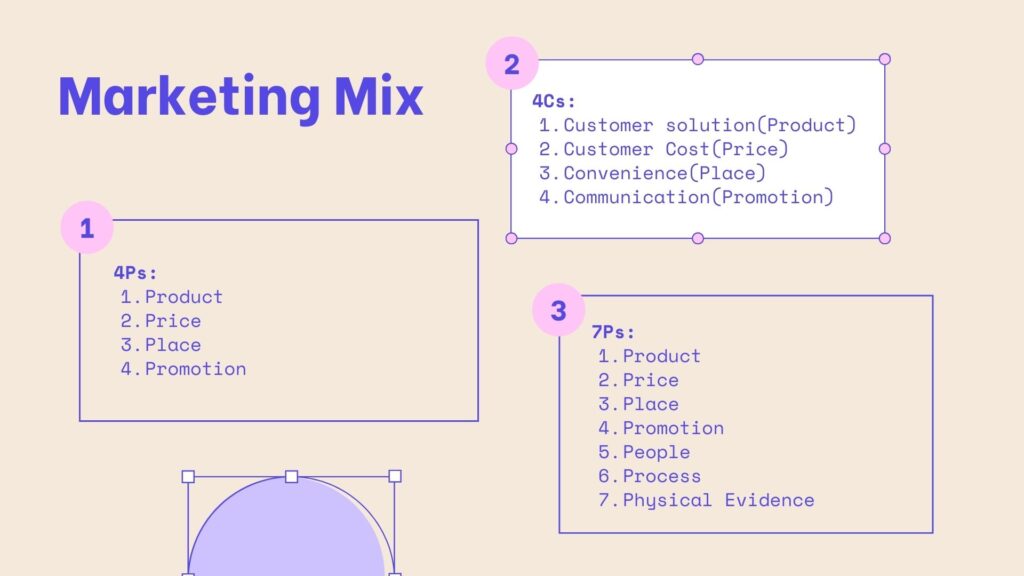What is the marketing mix?
The marketing mix has been the foundation of effective marketing strategies for decades. The term itself comes from the first chapter of Walter B. Pitkin’s 1938 Marketing: Analysis and Planning. However, the marketing mix has evolved over time, and today it is best described as a strategic framework that details how you can effectively advertise your product or service to attract customers. The marketing mix is the art of blending all your efforts into a single package that can provide maximum impact. A well-designed marketing mix will help you create a winning strategy that will help you gain a competitive advantage over your competitors for your target audience.

What are the 4ps of marketing mix?
The 4Ps are the four components of the marketing mix. These are product, price, place, and promotion. The “P” stands for each one of these factors in relation to your product or service. The “P” is what you must focus on if you want to be successful in selling your product or service. You can use these 4Ps to help you determine how to sell your product or service, and it is very important that you understand each one of them, based on your market research, in order to create a winning strategy for your business. The four ps of marketing are:
Product
What is the marketing mix for a product?
The product is what you are selling. It can be a tangible item, such as a car or appliance, or it can be an intangible service, such as advice on personal finance or professional resume writing. The product is the main focus of your marketing strategy for the target audience. You should think about how you can use this new product to make a difference in people’s lives, and also create value for them. This will help you establish your business as something that has real meaning and substance, which will be beneficial when you are trying to gain a competitive advantage over your competitors.
Price
How much should you charge for your product or service?
Price is the most important factor in the marketing mix because if your pricing isn’t right, you will have a hard time selling your product or service. It is also important to remember that price isn’t the only factor in the marketing mix. You need to consider all of the other factors as well when determining how much you should charge for your product or service to gain maximum market share.
There are other factors that should be considered when determining your pricing strategies. These factors include:
Competition
The more competition there is in a particular market, the higher the price will be for that product or service.
Commodity
If you are selling a commodity, then the price will be higher because it is not very differentiated.
Market demand
If there is not enough market demand for your product or service, then the price will be higher because you have to charge more money to cover costs and make a profit. For example, if I wanted to sell an appliance at Target, but there were no customers willing to buy that appliance, then I would have to charge less money for it. However, if I wanted to sell an automobile at a website like Compare Auto Insurance, then the price of the car will be lower because there is a greater demand for those cars.
Place
Where will you sell your product or service?
The place where you sell your product or service is also very important. For example, if you are selling an appliance, the place where you sell it may be at a big box store like Target or Best Buy. If you are selling car insurance online then the place that people will buy your insurance might be at a website like Compare Auto Insurance.
Promotion
What type of advertising and promotional strategies can help you to gain customers for your business?
The promotion part of the marketing mix is what you use to get customers for your product or service. You can do this in many different ways, such as advertising on television, using social media, public relations, or using direct mail campaigns. Some of the channels for promotion are:
Advertising
Advertising is the most common way to promote your product or service. For example, if you are selling an automobile at a big box store like Target, then you might advertise that car on television during sports games because many people watch those games, and commercials for cars can get their attention. Advertising can be expensive, but it is the most effective way to promote your product or service.
Direct Mail
It is one of the important forms of promotion from the 1960s to the 1990s. For example, if you wanted to sell car insurance online, then you might send out a direct mail campaign to people who are looking for car insurance. Direct Mail can be expensive, but it is very effective because the recipients will often open your envelope and read your information about your product or service. Alternative to direct mail is Email, in this internet age.
Social Media
Another type of advertising that you can use to get customers for your business is social media. For example, if you wanted to sell car insurance online, then you might post a picture of your company’s mascot on Facebook and Twitter. Social Media advertising has the potential to reach many people at once.
Digital Marketing
Digital marketing is a new type of advertising that can be used to promote your product or service. For example, if you wanted to sell car insurance online, then you might use your digital marketing mix of Google AdWords, SEO, and Facebook Ads. Digital marketing requires a lot of time and money for website design and driving traffic to your website.
Conclusion
The marketing mix is a basic marketing framework that outlines the various components that are involved in the marketing plan of a product or service. These elements of the marketing mix have been used for many years to help companies improve their sales efforts. Nowadays, the marketing mix has evolved to encompass other areas such as customer relationship management and customer experience. We’ve written about what they are and how their managerial approach evolved in our other blog posts, so you should check them out if you’re interested in learning more!
